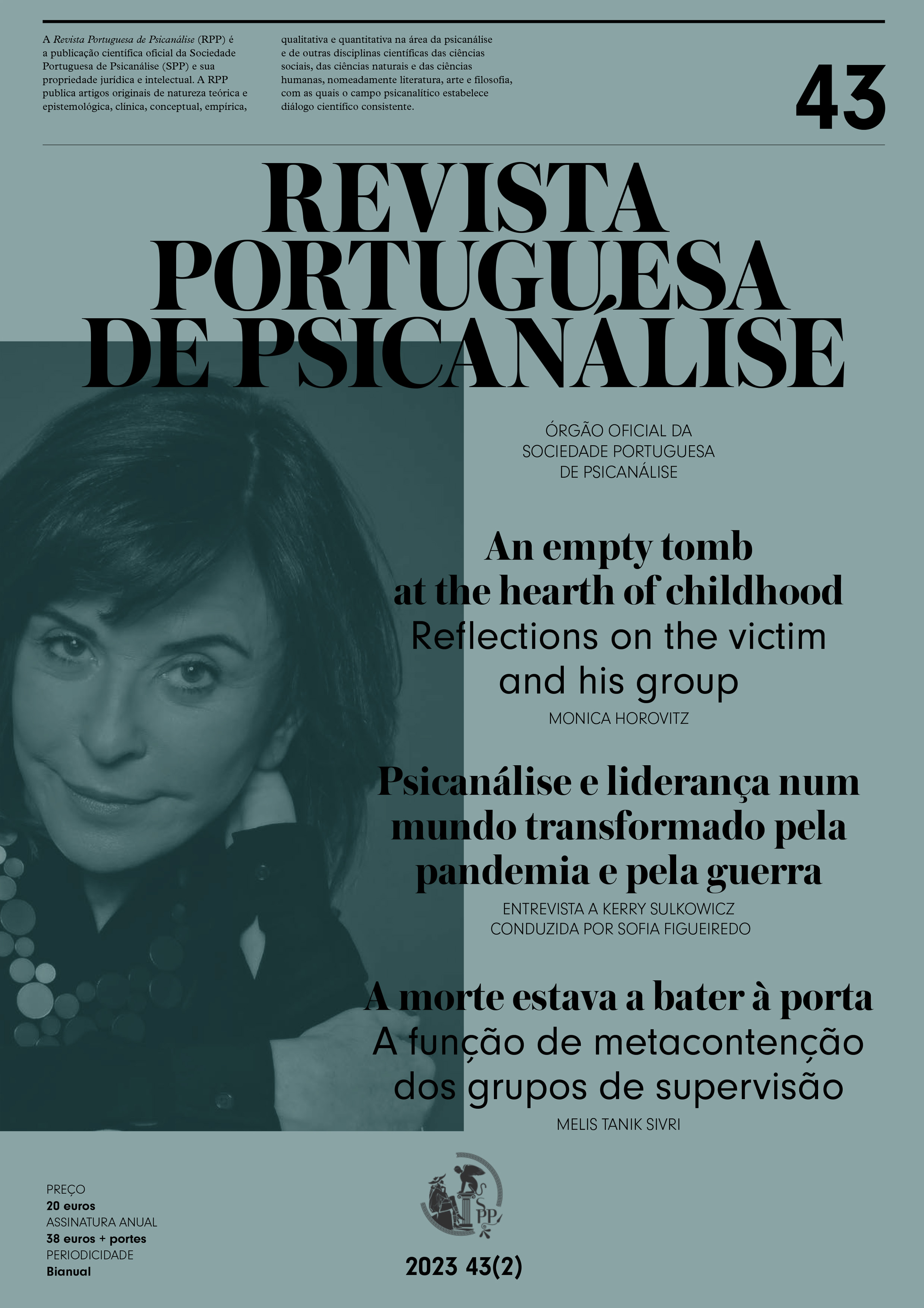A dinâmica inflamada da violência quotidiana: o contexto indiano

Abstract
The dynamics of a passionate-violence in everyday living: an Indian context
The author claims that the contemporary social dynamics in India is based on a pathological splitting between good and bad, right and wrong, “us” and “the others”. In this context, empathy for the other’s suffering disappears and indifference is socially permitted, as a survival defense mechanism. Women are particularly stricken, being seen as “the disavowed other”, in a pathological splitting between the ideal mother goddess and the humiliated flesh and blood woman. Thus, violence against women is a worrying feature of today’s social atmosphere in India. Two clinical vignettes are described to illustrate this problem and its consequences on women's psyche.
Keywords
splitting, disociation, anihilation, survival, intolerance to the feminine, repudiation of femininity
Author Biography
Jhuma Basak
Psicanalista Didata da Indian Psychoanalytical Society e membro da Associação Psicanalítica Internacional. É doutorada em Psicologia pela Kyushu University, em Fukuoka (Japão). É consultora do COWAP (Comité Mulheres e Psicanálise) para a região da Ásia-Pacífico.
References
- Altman, N. (2005). Manic society:Toward the depressive position. Psychoanalytic Dialogues, 15(3), 321–346.
- Basak, J. (2014). Cultural altruism & masochism in women in the East. Em L. Pasquali & F. Thomson-Salo (Eds.), Women & creativity: A psychoanalytic glimpse through art, literature, & social structure (pp. 255–266). Karnac.
- Basak, J. (2021). Today’s women in India – Journey from ‘family romance’ to ‘separation individuation’. No prelo.
- Bohleber, W. (2003). Collective phantasms, destructiveness, and terrorism. Em S.Varvin & V. Volkan (Eds.), Violence or Dialogue? (pp. 111–130). Routledge.
- Borg, M. (2007). Just some everyday examples of psychic serial killing: Psychoanalysis, necessary ruthlessness, and disenfranchisement. Em B. Willock, L. Bohm, & R. Curtis (Eds.), On Deaths and Endings (pp. 42–59). Routledge.
- Chodorow, N. (1974). Femininities Masculinities Sexualities – Freud & Beyond. Free Association.
- Douglas, M. (1984). Purity and danger: An analysis of the concepts of pollution and taboo. Ark Paperbacks. (Original publicado em 1966.)
- Green, A. (2005). On private madness. Karnac. (Original publicado em 1986.)
- Kitayama, O. & Ogimoto, K. (2021). COVID-19 and Japanese tragedies: Looking forward to our happy endings. Japanese Journal of Psychotherapy.
- Marcuse, H. (2011). The ideology of death. Em D. Kellner & C. Pierce (Eds.), Collected papers of Herbert Marcuse, volumeV - Philosophy, psychoanalysis and emancipation. (pp. 122–131). Routledge. (Original publicado em 1959.)
- McGowan,T. (2019).The sex in their violence: eroticizing biopower. Em V. Sinclair & M. Steinkoler (Eds.), On psychoanalysis and violence (pp. 47–59). Routledge.
- Rangell, L. (1976). Discussion of the Buffalo Creek disaster: The course of psychic trauma. American Journal of Psychiatry, 133, 313–316.
- Volkan, V. (2002). Large-group identity: Border psychology & related processes. Mind & Human Interaction, 13, 49–76.
- Volkan,V. (2007). Individuals and societies as “perennial mourners”:Their linking objects and public memorials. Em B. Willock, L. Bohm & R. Curtis (Eds.). On Deaths and Endings (pp. 42–59). Routledge.